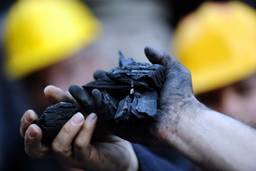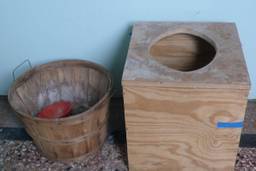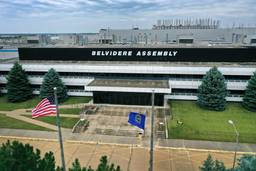The potential public health threat posed by the application of sewage sludge as fertilizer made news in June when lead levels of 93 parts per million (ppm) were reported in Michelle Obama’s garden.
According to a February National Park Service soil analysis, the levels of arsenic, cadmium, mercury and lead on the White House South Lawn were all at levels deemed safe by the EPA.
Yet some public health experts maintain the EPA’s current heavy-metal safety standards are outdated. What’s more, the EPA sludge standards don’t include other dangerous contaminants that lurk in sewage. A stew of new pharmaceuticals, personal care products and cleaning agents gush down drains daily, and are later processed through municipal treatment plants. The resulting sewage sludge, known euphemistically as “biosolids,” is then applied as fertilizer to land.
Sewage sludge, under the brand name ComPRO, was last applied to the White House South Lawn in the mid ’80s, according to D.C. Waste and Sewer Authority (DC WASA) Biosolids Manager Chris Peot.
More recently, the George W. Bush administration encouraged federal agencies and contractors to purchase recycled products, and in 2003 added “compost from biosolids” as a recommended product of the federal green purchasing program under the Resource Conservation and Recovery Act. Subsequently, much to the sludge industry’s delight, 1,500 cubic yards of sludge was used in the 2004 conversion of Pennsylvania Avenue into a pedestrian mall.
The EPA sets the bar for heavy metal levels considered safe for gardens and contact with children. Yet the current one-size-fits-all lead standard doesn’t account for the different bioavailability of various chemical forms of lead. According to David L. Johnson, a professor at the school of Environmental Science and Forestry at the State University of New York in Syracuse, 93 ppm of lead acetate is very different from 93 ppm of lead chloropyromorphite, as the latter is more likely to be absorbed into an organism’s circulation system. Neither the Park Service’s White House South Lawn report nor EPA regulations account for these variables.
A number of potentially harmful non-metallic toxins commonly found in sewage sludge are not regulated by the EPA. The typical soil report tests only for some biological pathogens and heavy metals. “It’s fair to say that EPA rules in general are out of date,” says Murray McBride, director of the Cornell Waste Management Institute. What’s more, EPA rules have failed to take into account the surface water runoff from sludge application sites. That runoff is thought to contribute to the sudden appearance of intersexed fish in the Potomac River.
EPA regulations on sewage sludge have collected dust since 1993, when current standards for sewage sludge disposal were first implemented. In 2001, the EPA revisited the standards for a biennial review required by the Clean Water Act, and concluded that no additional pollutants should be included. In 2002, the National Research Council’s Committee on Toxicants and Pathogens in Biosolids Applied to Land report gingerly broached the subject of local outbreaks of sewage-sludge-induced illnesses, but fell shy of an actual judgment on the safety of biosolids usage. The report also found the EPA did not have a systematic way of documenting local complaints.
In response to the EPA’s failure to take any action, in 2007 the Cornell Waste Management Institute compiled a matrix of reported incidents of illnesses near sewage sludge application sites, documenting a slew of symptoms ranging from nosebleeds and thyroid disorders to vomiting and cancer.
The EPA finally responded to the 2002 National Research Council’s report and in January published the Targeted National Sewage Sludge Survey Report (TNSSSR), which covered sludge from 74 publicly-owned treatment works in 35 states. The EPA tested for and discovered in all samples additional metals, disinfectants, steroids and flame retardants never before scrutinized as pollutants.
But recognition of potential risks on paper does not translate to action. “At this point, there’s not enough known about each one of these microconstituents that are in there to allow major efforts right now in developing standards,” says Alan Rubin, the EPA’s retired senior scientist and Chief of the Sludge Risk Assessment Branch in 1993, when the EPA first redefined sewage sludge as fertilizer.
The EPA refuses to release information about the progress of its deliberations and no decisions have been made on whether sludge will be more strictly regulated. For the rest of the year, the EPA will study the risks of certain sludge pollutants and their toxicity to humans and wildlife. Maybe standards will be written for some of those toxins. Maybe sewage plants will be required to implement extra treatments to bring down levels of certain pollutants. But what is certain is that the elimination of sewage sludge use as a “tried and true” fertilizer is not on the table at the EPA.
GET INVOLVED:
Re Source Institute for Low Entropy SystemsSisi Tang, a former student of history, is now a writer and traveler based in Istanbul.








